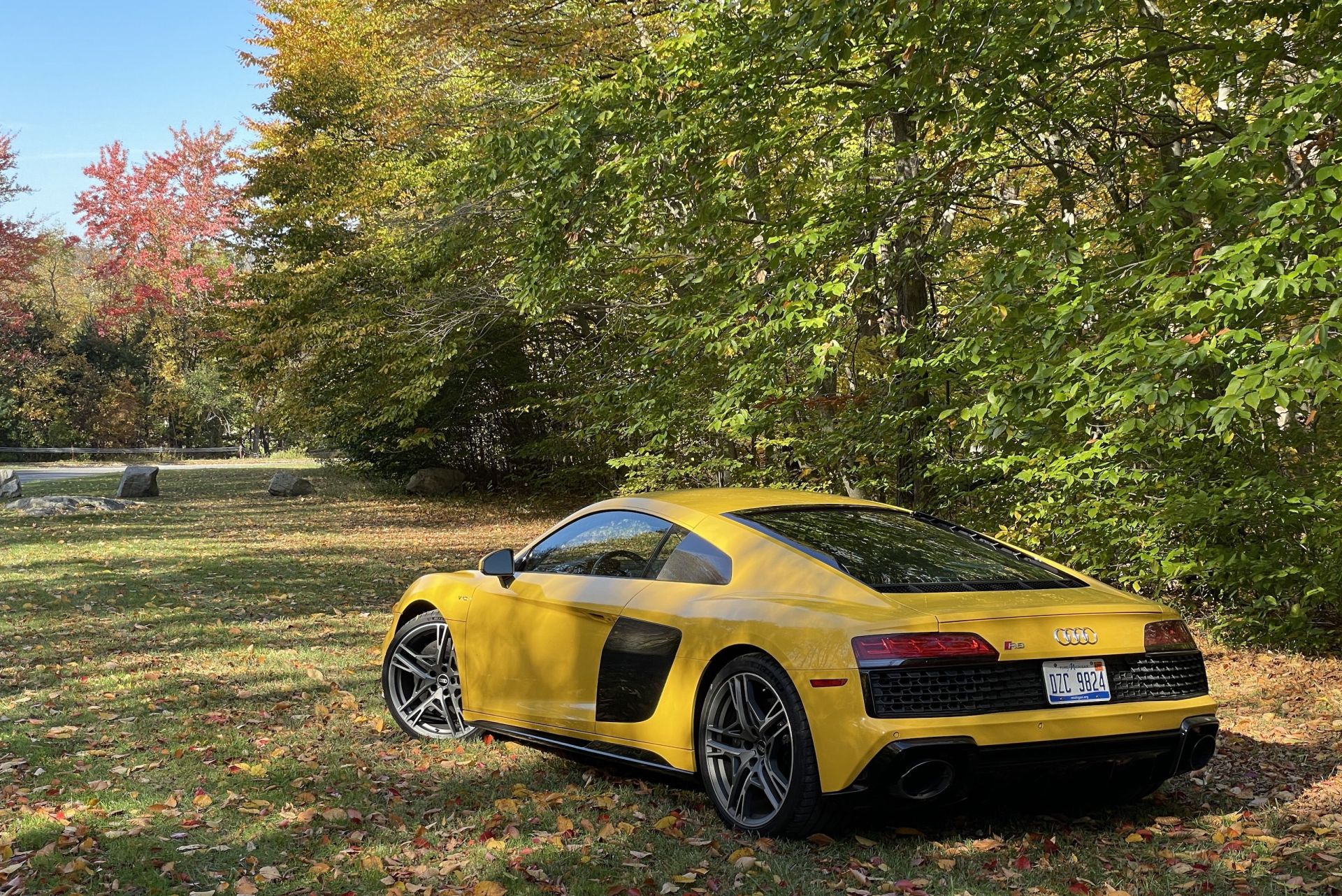Supercars, generally speaking, have made great strides in terms of usability in the past few decades. Dart back 30 years, and Ferrari and Lamborghini owners were stuck suffering with temperamental machines that broke down often, were all but unusable in bad weather, and had the ergonomics of a CIA black site. These days, however, supercars and super sports cars are practically as usable as Camrys; you’d be just as comfortable toodling down to the store and picking up a 12-pack of paper towels in an 812 Superfast as you would in a Toyota.
One of the key moments on that journey: the arrival of the Audi R8 in 2006. While it was based on the same bones as the Lamborghini Gallardo, it delivered a more approachable experience than that Italian steer; it was easier to drive, and arguably easier on the eyes, too. Much like the first Acura NSX, it helped redefine what a high-priced two-door speed machine should be like — not just on the track, but on the street, too.
Here in 2023, the R8 is staring down the tail end of its second generation, and staring into a future that looks very different than when it first debuted. Back then, high-revving internal combustion screamers were all the rage in the sports car world; today, it’s about making more power from smaller blocks, via turbochargers, hybrid systems and all kinds of other techno-trickery. Still, in spite of its age, Audi’s icon still has plenty of pleasures to bestow upon its driver. Especially, as it turns out, if you opt for a rear-wheel-drive model.
The Audi R8 is arguably better in rear-wheel-drive form
 Will Sabel Courtney
Will Sabel CourtneyA decent chunk of the added usability found in the supercar and super sports car categories in recent years has come from the widespread adoption of all-wheel-drive: not only does it add a semblance of wet/cold-weather capability, but it also makes extracting every ounce of potential performance easier. However, here at the end of its life, the R8 is arguably better in RWD form. (The idea of an Audi, the brand that basically exists in America due to Quattro, being better without AWD is admittedly a bit ironic.)
First off, simply put, it makes the R8 a bargain. The two-wheel-drive version comes in at a whopping $51,100 cheaper than the all-wheel-grip variant. (My test car was technically a 2022 model, which actually almost $10,000 cheaper still.) Sure, you lose a little power in the process — the RWD version is down 40 horsepower and seven lb-ft of torque versus the AWD R8 — but it still manages to spit out 562 hp and 406 lb-ft. Weigh that against the Porsche 911, where arguably the closest analog, the 911 GT3, makes just 502 hp and 346 lb-ft, but starts at around $18,000 more.






